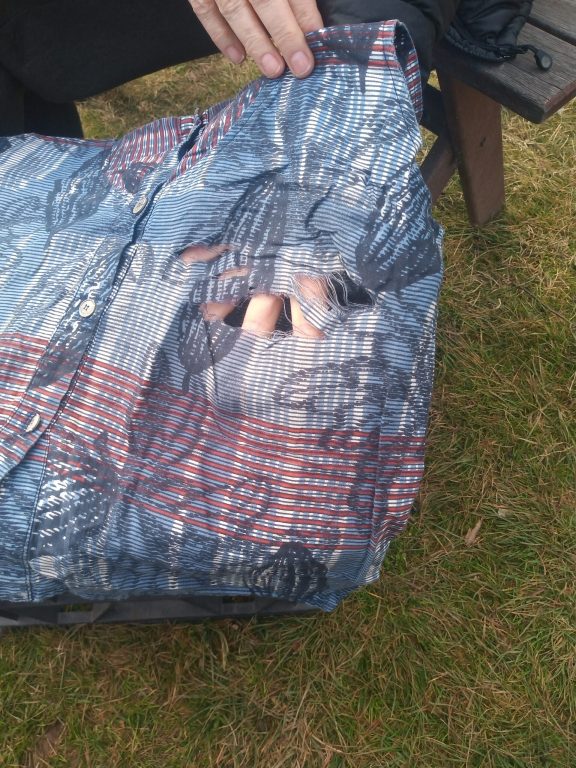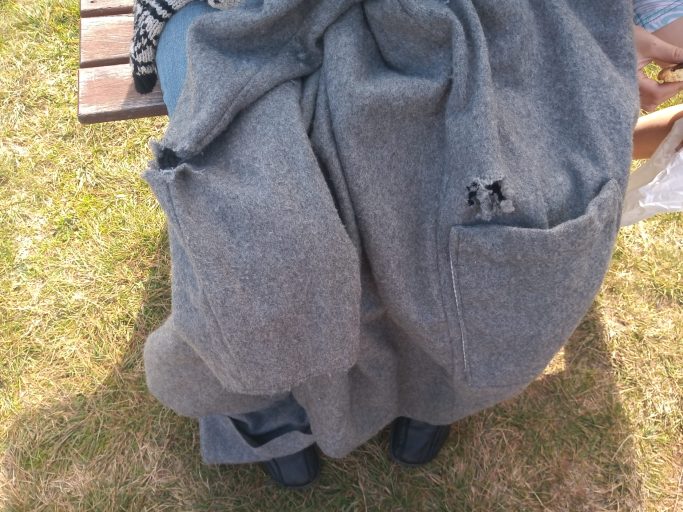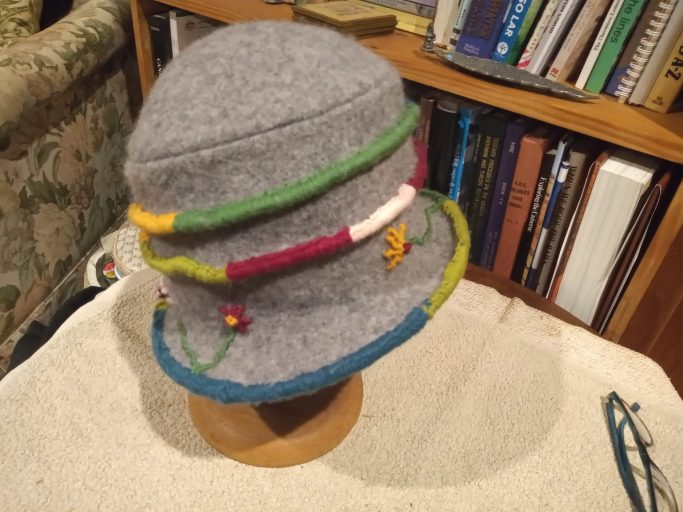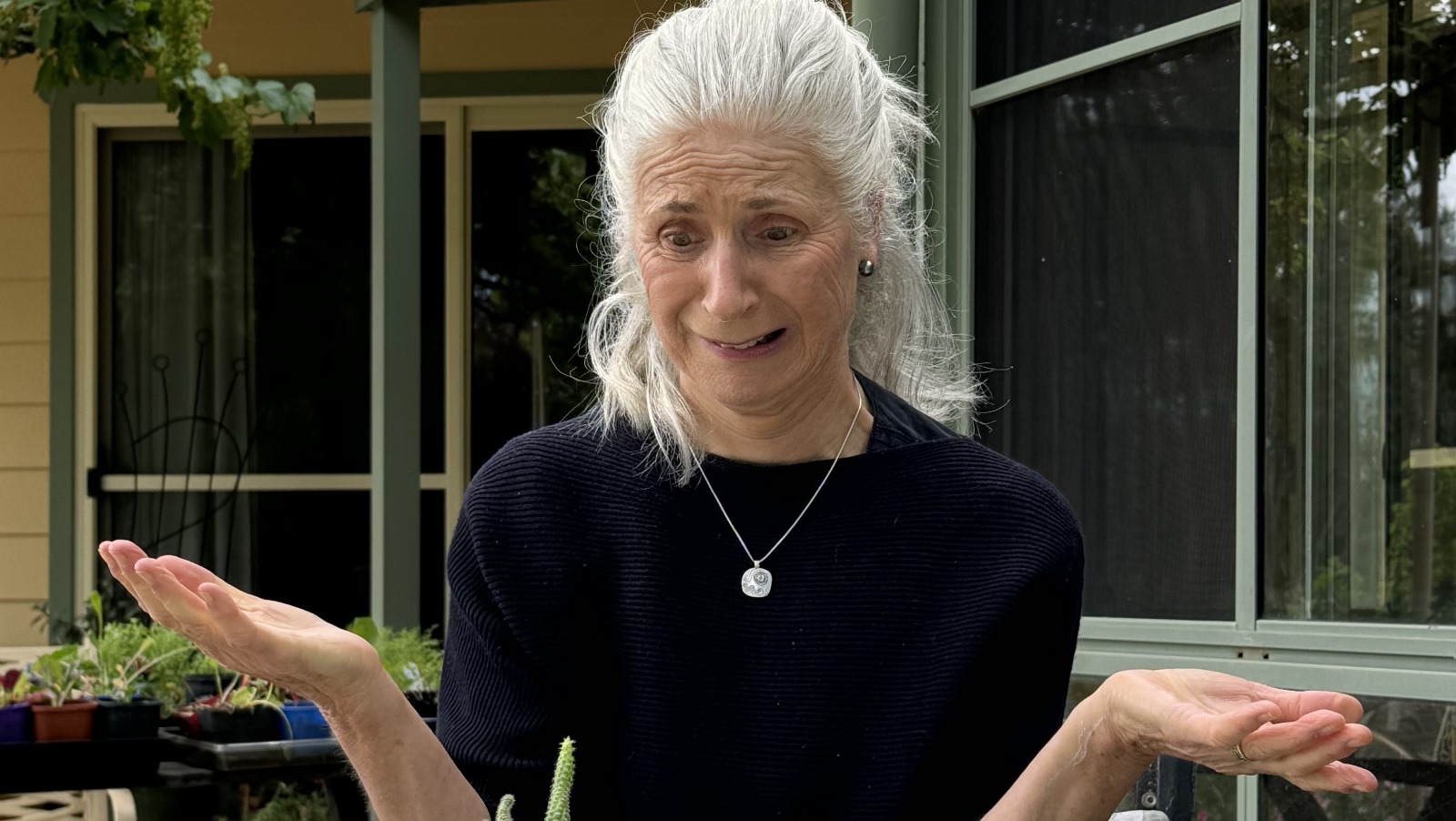First up, a big confession. I am not an economist. This could either be an enormous relief to you,
or a stumbling block to read further. Either way I invite you to come along for the ride and see
what I have to share. Read on.
Definitions First Please, I Hear You Mutter
So here they come. Simply put, the circular economy is about keeping what we have produced in circulation. It aims to end limitless extraction and the accumulation of waste.
It is that simple: make things to last.
Eradicate inbuilt obsolescence.
Ensure maximum use from resources which are quality made and already in circulation.
And ensure that there is no waste generated for disposal.
So, waste becomes an obsolete concept.
And that’s the complexity of it. Because to do this I argue that we need radical whole-systems thinking for meaningful change to take place. Change from a capitalist conceived, growth fuelled linear economy, to a circular economy. A closed system where growth is for enrichment of society not the expansion of the GDP.
Second confession. I am an altruistic dreamer (but you already guessed that?)
Lived Examples of the Circular Economy in Action
So back to what I have some control over. Creating ways to keep the resources that I have in my life and my community in circulation for as long as possible. Without producing waste.
Dreamer I may be but I am also highly pragmatic.
Game on.
Third confession. I am a non-sewer.
But I can mend. And darn.
And I do. And encourage others to, too. In fact, I have become a self-confessed darning enthusiast. Quite an exclusive club, or so I at first thought.
During Covid I discovered the cathartic and hypnotic benefits of darning woollens – moth holes in jumpers, threads pulled in knits (by cat’s claws or other unplanned encounters of sartorial vandalism).
Darning Initiation- Item # 1 Dog Collar
You probably didn’t expect that. I didn’t either, but I complimented a friend on the tapestry-esque dog collar her canine was modelling. And she confessed to having darned it herself. The dog being a terror for biting collars had been through one too many of these costly accoutrements.
So, darn it she did.
I looked at the rather scruffy collar on our hound (who had an otherwise impeccable sartorial reputation – not). But you guessed it. Darn her collar I did too. With great results.
The Perfect Place to Start My Darning Circularity Saga.
Because from here I take off.
A few simple stiches.
Several balls of wool.
Darning needles and a thimble.
Simple equipment for astounding results. Items which would otherwise have been deemed unwearable or unusable and sent on a recycling journey of uncertainty via the local charity shop and from there onto…
Are darned and saved from this ignominious demise. Not only are they put back into circulation in my wardrobe, but receiving compliments.
Hah. What a turn around.
Long on creativity and short on skill, nevertheless, jumpers, knits, leggings and throw rugs come to life through the dogged commitment of my untutored needle and yarn. And here’s the amazing thing for a self-confessed non-sewer.
IT GIVES ME SOOOO MUCH JOY.
Who knew?
Mend and Make Do, Darn and Yarn Circle.
So, I decide that I need to share the love. I collaborate with our local Farmers Market. And on cold, sometimes wet and windy winter Saturday mornings we set up our daring circle around the fire pit. And, well, darn. And yarn.
I discover that it isn’t such an elite club after all. Lots of people of all ages and stages of life are enjoying the challenge and contentment of darning. Because it gives life to the threadbare and holey. And brings the satisfaction of keeping loved and cherished items in circulation. Safely in the familiar surrounds of your own wardrobe. To wear and love, and love and wear, again and again.
We sit and darn and people drop by and share their darning woes and challenges. One local asks me If I would darn her possum gloves chewed by a dog … One seasoned and talented darner turns up wearing a resplendent darning-embellished pair of overalls. A beautiful example of wearable art.
Others arrive with an item they love but… and a familiar query.
“Is this suitable for darning?”
And the reply is (note this is the chorus and I invite you to join in):
Yes.
Every time.
No hole too big.
There is always a way.
I explain that I have no credentials and only a modicum of experience so am well placed to give advice. After all, my aim is to enthuse and encourage others to darn. To experience the immense satisfaction of giving life back to an article of clothing, a favourite rug or woolly whatever.
Segue Warning: We Are Going Totally Off Track for a Paragraph or Two.
But there is lot more to the mend and make do story than meets the eye or the needle. There is the indefinable but very real value which is added to the item because it has been mended.
A good example of this principle is Kintsugi which is the Japanese art of repairing broken pottery. With gold. Yes, you read correctly. The cracks in the re-formed pottery are highlighted in gold.
It is an art form of the adage ‘waste not want not’ and keeps the vessel in circulation. There are spiritual and religious metaphors attached to Kintsugi, but at its essence it is keeping broken pottery out of the garbage bin by regenerating it to functionality and beyond. Loved. Valued. Used.
The Magic of Mending
Religious or spiritual metaphors aside, what I have learnt through darning, is that there is a synergistic effect. 1 + 1 = much more than two.
Mending an item brings a new dimension into play. You now have a deeper personal relationship with it. It displays your dexterity, determination and creativity. And if darned or mended in company, the refurbished item is redolent of community activity and ta reminder of the pleasure of sitting and having a good old yarn.
Operation Circularity: One Sunny Saturday Morning – A Darn Success.
In early June 2023, we head off to the Farmers Market for another darning jaunt. Bag of yarn and darning accoutrements in tow, laden with holey socks and sundry other items requiring attention, we settled in to darn. No fire pit today as it is unseasonably warm. And folks drop by.
One little chap has the story of cutting a teddy bear shape out of a favourite old shirt he had outgrown. He then sews the teddy bear shape onto a cape. And then affixes the cape onto his soccer jersey. Because it is superhero day at soccer.
A small local super hero in the story of the circularity.
Next up is the case of the dismembered denim jacket. Literally worn until it is falling apart. But can it be saved? Salvaged? Repaired for a new life and be loved and worn yet again?
(Chorus)Yes.
Every time.
No hole too big.
There is always a way.

Equally loved is a sleeveless cotton blouse. Not traditional darning territory but we are game.
A plan hatches.
Bring plain dark coloured fabric in behind the tear. Darn together.
Change the buttons down the front to pick up the colour of the darn.
Job done.
Favourite summer item back in circulation.

And just as we are slowing down a really tough customer arrives. Handmade (by loving spouse) one lined, wool, men’s overcoat.
Gnawed by rats. In several places.
The cheek!
Can it be saved? (you’re getting the idea of the refrain so please join in).
Yes
Every time.
No hole too big.
There is always a way.
In this case, there are still some remnants of the original wool fabric. It will be relatively easy to do a back patch behind the gnawed gash, and darn the two together. Stage two will be to judge if it needs to be accented, hidden or emboldened by…whatever. Stay tuned. But be reassured the overcoat remains in circulation. Loved. Used. Valued.

And if the hat fits, keep wearing it is my personal dilemma. One grey felted hat. Stylish in its own way. Moreover, it is extremely comfortable. Neither holey, rat chewed nor threadbare. But oh, so dull and boring.
”If the hat fits, wear it” but I repeatedly do not wear it. For several winters in a row.
It is a gift. I really appreciate the thought and the generosity of the giver, but not so much the colour of the hat. And cannot bring myself to be reduced to its sombre monochrome on a cold winter’s day.
On such days where I live you need a dash of colour. A pinch of sass. A streak of life to energise you through the wintry hours.
A decision is made. Either I wear the hat or give it away.
Then inspiration visits.
Perhaps I can transform the hat from its Cinders-cleaning-the-ashes state to Cinderellaready-for the-ball glory? You know the refrain.
Yes.
Every time.
No hole too big.
There is always a way.
And so, it happens. Colourful wool yarn, a bit of imagination and many stiches later. The result really is a charmer, a warmer and a keeper. One hat kept in circulation on my head. One head warmed with cheer on the chilly days. Circularity success. And a remarkable number of compliments.

The Great Irony
In the mending and darning world, provenance and sentimentality combine with functionality, to produce powerful synergistic circularity. It is the lived experience of the garment itself is that makes the owner want to keep it in circulation.
And as the regenerated item comes into circulation again it brings greater joy and life with it. Joy to those who have mended it, to those who have observed the mending process, to the wearer and to the item itself.
Can an item have joy?
As a non-economist I say resoundingly, yes!
Examples Abound
My lived experience of circularity is by no means unique. There are wonderful initiatives springing up around us in towns suburbs and everywhere in between. Because people like you and me want to keep things in circulation. We don’t want to keep on buying more, owning more and creating rubbish.
You will have your own examples. Perhaps it is Buy Nothing, clothing swaps, bartering, Repair Cafés, tool libraries, toy libraries, book libraries, street libraries…
Final Confession
Even I know that we need more than darning. Or recycling. Much more.
We need systemic change.
The values which have fuelled capitalist production, voracious consumption and never-ending growth have failed us. Failed our environment and the multiple ecosystems which used to flourish and bring so much richness of life to us and to our planet.
But we have to start somewhere. In its own humble way darning, mending, recycling or whatever it is that you are doing is a great place to start. To value, use and reuse what we have. To fix, mend, patch. Upcycle, recycle, repurpose. All our actions, no matter how small count. They are all subtle revolutionary acts of embodied circularity.
Circular, not linear, living. Regenerating life for all, not reneging on all life.
Circularity is the antithesis of the current throw-away culture we are currently choking in.
Choking on over consumption.
Choking on stuff, rubbish, poorly produced junk.
Choking on waste.
What a waste.
Good News
Circularity offers relief for this choking. Because there is no more waste to choke on. You can’t choke on something that isn’t there.
Circularity creates the space to enable us to breathe deeply, breather together. And when we do this, our earth is able to regenerate and to breathe with us.
The alternative is unthinkable.


